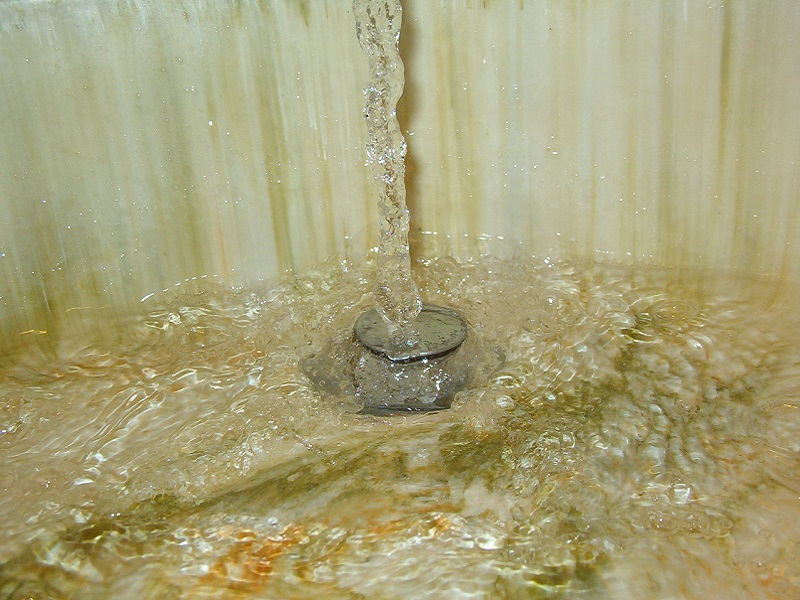Unclogging A Slow Bathroom Sink
Unclogging a slow bathroom sink is something I needed to do recently. We all use sinks and over time hair and soap will build up and slow the flow of water from the sink. It is inevitable sooner or later we are faced with the slow running drain.
 FreeImages.com/Nick Colomb
FreeImages.com/Nick Colomb
Unclogging that drain can be anywhere from DIY easy to grab the checkbook and call a plumber. But let’s concentrate on what will return the drain back into speedy operation 99.9 percent of the time. Grab the plunger and let’s clear that drain.
Caution going off topic
Before I continue let me pull out this rant box. You need to know that I have two plungers one for sinks and one for toilets(my sink plunger is a smaller version of the toilet plunger) and I like to keep them separate. They have different but similar functions and I never want to use a toilet plunger on any sink. They do make plungers that can handle both tasks. But if I were to use the toilet plunger on my sinks I would feel like I’m washing my hands in the toilet. Ok, ok I’m putting away my rant box.
How a plunger works
A plunger works because you can’t compress a solid(in this case water). You’re going to fill everything from the sink to the P trap with water(accomplished by filling the sink with water and then opening the pop-up drain and watching the water drain until it slows). When you plunge you will be moving the water back and forth in the pipes from the plunger to the P trap. The rapid movement of the water back and forth will break up most(but not all) of the stuff forming the restriction in the drain pipe.
What’s the goal?
The goal of plunging is to get the drain clean enough to be able to move the water away at a faster rate than the faucet can deliver it.
Safety
Wear gloves(preferably disposable) and safety glasses with side shields to prevent spreading contaminated material from the plunging process in your home and on you.
Plunging a single bathroom sink
You will need a plunger and a wet rag. The secret to plunging success is two-fold. First, have as much water as possible in the pipes from the sink to the P trap while plunging. Second, creating a tight seal with no air leaks from the sink vent while using the plunger. You want the water to move thru the P trap and not up into the vent(bathroom sinks have vents built into them).
I don’t remove the pop-up drain while plunging. I will normally not disassemble anything to remove any remaining hair(see goal above).
Have the sink filled with enough water to cover the bell of the plunger. Press a wet rag into the sink vent. Hold pressure on the rag during this procedure. Get help if needed or perform the plunging single-handed.
With the plunger firmly over the drain plunge vigorously several times. You should feel the resistance of the water as it moves back and forth in the P trap while plunging.
You should start to see black stuff(a technical term for gunk) appear in the water. This black stuff is made up of hair, soap residue, algae, anything that has gone down the drain, definitely things that stuck to the drain walls. When you hear the suction clear the clog, remove the plunger and flush the drain well with hot water. Repeat the process again until you no longer have any of the black stuff in the water during plunging.
Double bathroom sinks
Determine if both sinks are draining slowly. Double sinks usually share a single/common P trap(but not always). Open up the cabinet below the sinks to verify that there is one P trap for both sinks. If only one sink drains slowly and the other sink is fine the restriction is not in the common P trap. It can be anywhere from the slow sink’s pop up drain or any place in the pipe up to the P trap.
On the working sink close off the pop-up drain and fill the sink with an inch of water. Seal off the non-slow sink vent with a wet cloth. Have a helper hold the rag on the sink vent and keep the pop-up drain pushed down on the working sink. Fill the slow sink with water and cover the vent while working the plunger on the slow-moving sink.
Both sinks slow draining
If both sinks drain slowly you have more work to do. Any common part will likely be the problem. That would be the P trap or anything downstream of it.
Last chance P trap
It’s time to clean out the P trap and possibly the pipe from the P trap to the wall. The large, threaded nuts with wings on PVC plastic P traps can be unscrewed by hand. If there are no wings on the nuts then you will need pipe wrenches or large slip-joint v jaw pliers to loosen them. Place a bucket or pan under the P trap to catch the water and loosen the nuts on each part of the P trap and disassemble(note the washers as they may not all be the same) and clean it out. Disassemble the pipe from the P trap to the wall and clean it out. Clean the washers and pipe ends to prevent leaks. Reassemble and tighten the nuts.
If this hasn’t relieved the problem the restriction is beyond the P trap and in the DWV system. This type of clog problem is not for a plunger. You will need a plumbers auger. But this is the 00.1% and a lot of dirty work and a different article.
Related Article: After The Plunger Using A Plumbers Auger
(FreeImages.com/Nick Colomb)
